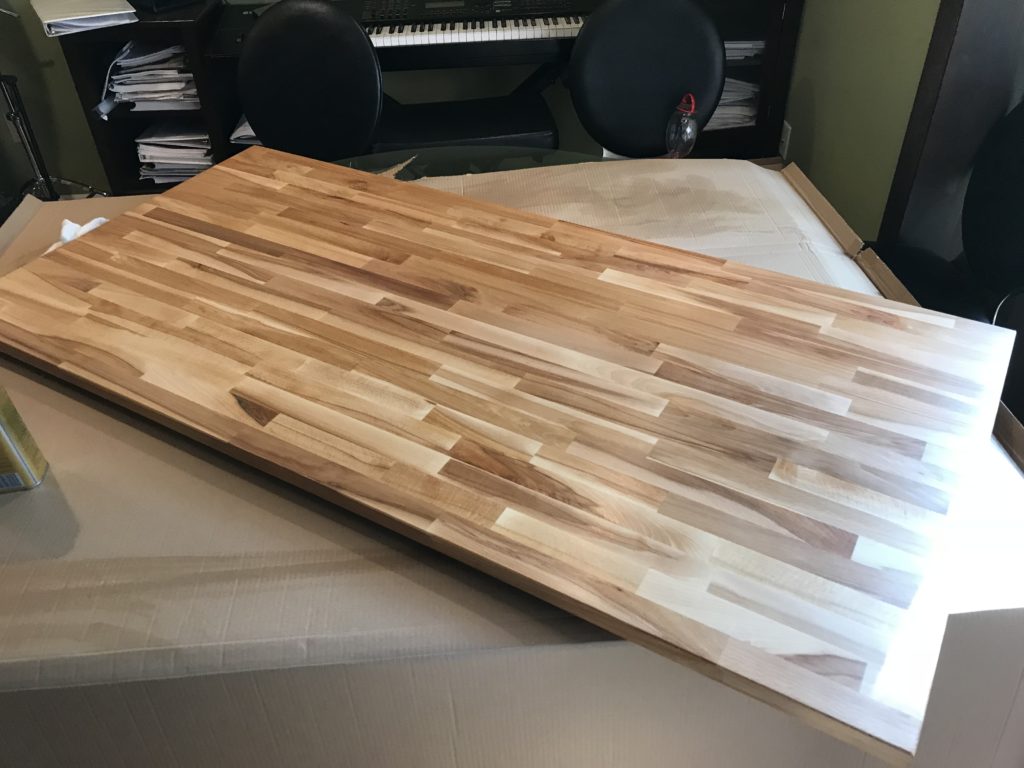DIY Standing Desk
If you work at your desk all day without getting up and moving around regularly, you’re not doing your body any favors! In the last couple years, I’ve tried moving around more while on conference calls and sitting in different locations (which is really easy at home, but in our new collaboration spaces at work it’s super easy too). Last year, while in the office, I used one of the sit/stand desks. I was surprised that after using it for an hour in stand position, I was still standing without a desire to sit (from my feet or my brain). I felt more focused standing, and when my feet and back told me it was time for the chair, I did it long enough to feel rested and did more standing. I didn’t like that the sit/stand desk had no keyboard tray, but it did go pretty low, so it wasn’t an ergonomic disaster-just not quite optimal.
The next day, I started researching buying a desk for home and found it’s pretty easy to spend between $600-900. I’m a person that always likes to make things my own, whether that involves customizing them or building them. I started looking for options to build a desk from a frame, and it turns out a few companies offer their desks without the top for people like me. I searched quite a bit to find a desk that could handle a decent weight, had good reviews online, and more than a 90-day warranty. After a lot of searching, I found a deal on Amazon. It was the… It was on sale for $279 and had an extra 20% cash back. I ordered it Friday and it appeared Sunday morning! I wasn’t ready with a top, so I cut a bit off a piece of plywood in my leftover stack in the garage to use in the meantime.
For the top, I wanted to go big. My current desk in my home office was a standard computer desk, about 4 feet wide and 20 or so inches deep. Most the ones online offered a 30×60 size which sounded amazing. I wanted a nice clean look – something with some nice grain patterns, not dark. I found my local IKEA store sold an unfinished solid wood butcher block top. I put three coats of poly on it to make the wood colors pop without a glassy finish. It was simple to mount (like < 30 minutes) and then I just had to attach the controls to the front of the desk. I found a great standing pad that I stick under the desk when standing and it’s worked out great. I found generally I like to stand 2-4 times a day for 45-60 minutes. I think that’s a great compromise for an information worker and I think the look turned out great.
Since the picture above, I 3D printed some cable management guides, mounted the power supply, and printed an under mount hook for my over the ear headphones (I call them the focus-phones)
Here are the parts I went with if you want to follow my path. The total for everything was under $400.



